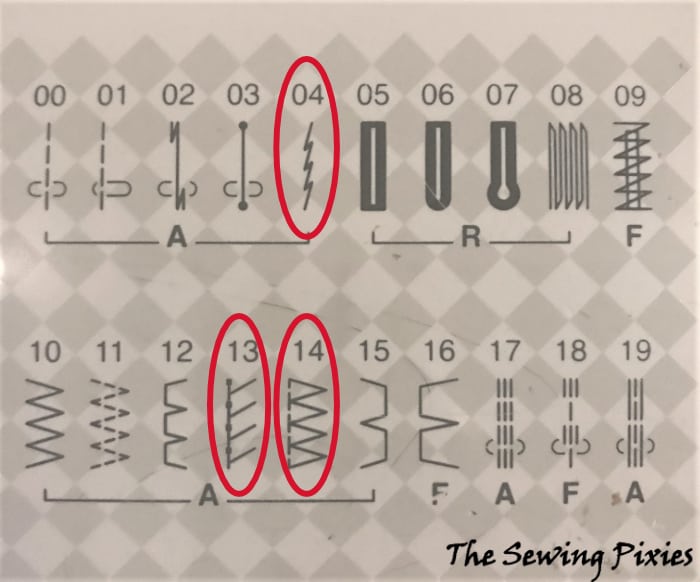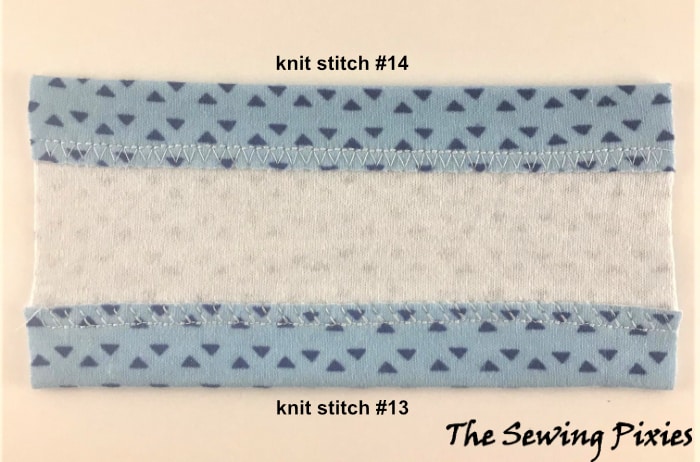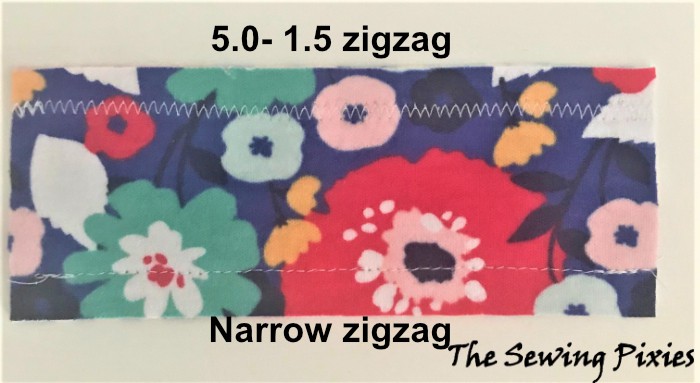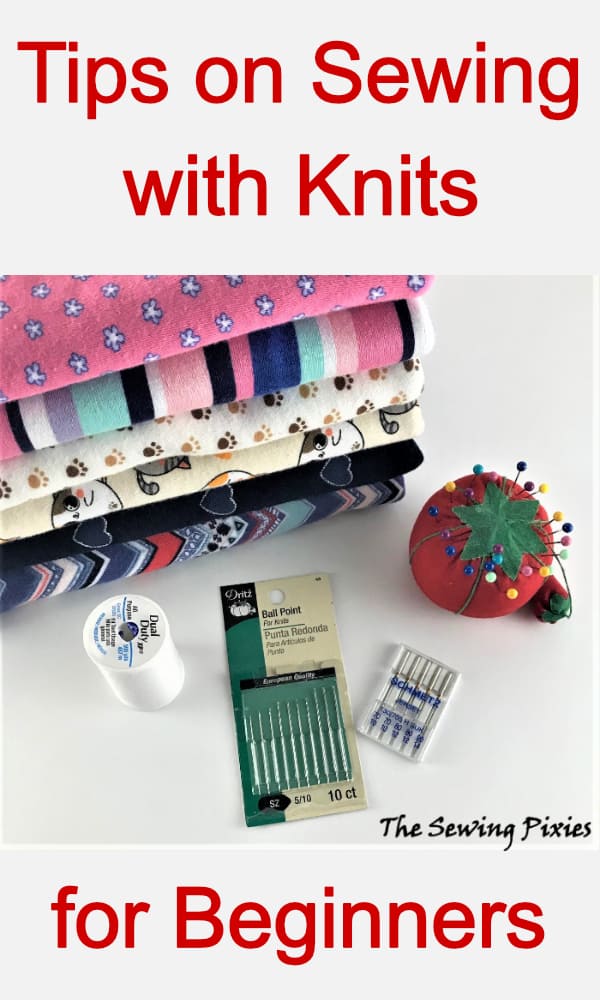You Don’t Need To Fear Sewing with Knit Fabrics! Follow These Simple Rules And Your Will Be Successful In Sewing With Knits.
Yes, I feared sewing with knits too! Up until I couldn’t find a fall/spring beanie for my daughter that we liked and I decided to sew it myself. We picked panda print knit fabric at Joann Fabrics and with guidance from lovely ladies that work there off we went home to face the challenge of sewing with knits 😊.
You can practice sewing with knit fabrics by making simple sewing projects like a beanie and a tube scarf for kids or a slouchy beanie and tube scarf for adults.
I Am Happy To Share With You Tips On Sewing With Knits
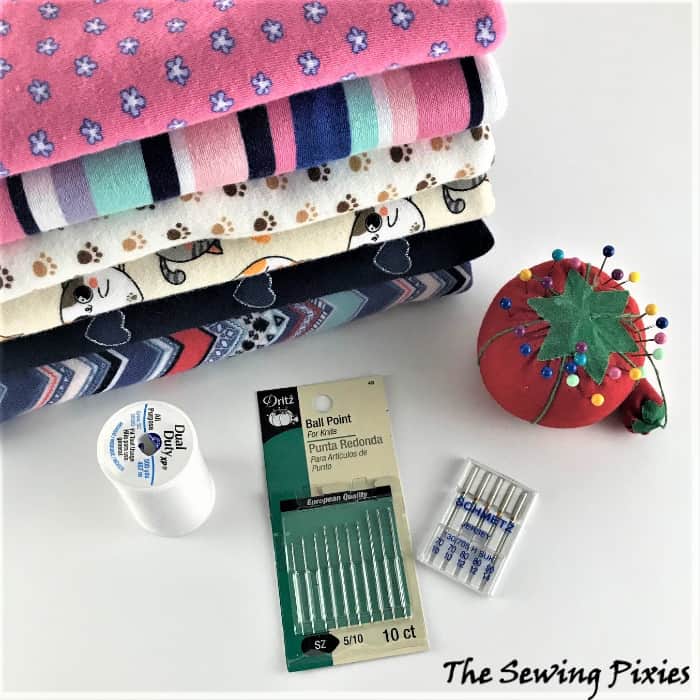
This post contains some affiliate links for your convenience (which means if you make a purchase after clicking a link I will earn a small commission but it won’t cost you a penny more)!
KNIT FABRICS. I like sewing with cotton knit interlock then jersey fabric. Interlock is thicker, more stable, and has a 2-way stretch, meaning that it’ll only stretch across the grain (selvage to selvage). Jerseys are thinner and stretch 4-ways making them a little tricky to manage, but don’t be discouraged and keep practicing.
You can find a wide array of knits at Joann Fabrics or Fabric.com
Always remember to wash and dry your fabric first, because cotton knits tend to shrink.
Reserve some scraps of fabric to test your needle and machine settings. You may need to slightly adjust the setting since the fabric takes the stitches differently when sewing with the stretch and against it.
When sewing bigger projects make sure to support the weight of the fabric. Do not let it fall to the ground while passing through the machine. Position your sewing machine that there is plenty of space to support your fabric.
Do not pull the fabric toward or away from you while sewing. Let the fabric go through the feed of your machine, gently guiding the seam direction.
NEEDLES and PINS. Correct needles are essential to successfully sewing knit fabrics.
Ballpoint needle also called jersey needle has a rounded tip that passes gently between the fabric fibers by separating rather than cutting them. It helps to avoid damaging the knit fabric. Ballpoint needles come in sizes 70/10 to 110/18. Use a smaller needle for finer knits and a larger needle for heavier fabrics.
Stretch needle is specially designed to help when sewing with 4-way stretch fabrics that has spandex or Lycra content. These needles come in two sizes: 75/11 and 90/14.
Stretch Twin Needle is used to hem knit garments and will sew a double seam, giving your finished hems a professional look. I talk about other hemming options below.
Ballpoint hand needle– use to finish knit projects that may need invisible stitch for perhaps closing an opening.
Ballpoint pins are essential when pinning knits. I would recommend storing them on separate pin cushions, that they never get mixed in with regular pins.
THREAD. You can use regular polyester thread to sew with knits, as long as you use a stretch stitch. I talk about stretch stitches below.
If you have an older machine that doesn’t have any stretch stitches or you really prefer using straight stitches when sewing with knits, then there is the one and only Maxi-Lock Stretch Thread that you can use. It is super easy to use! Thread your machine as you normally do and wind a bobbin the regular way. Set the stitch length to 3mm and the tension from 4.0 to 4.5, that usually works for me.
WALKING FOOT also called even feed foot helps to pull your fabric through the machine at a more even rate and that keeps the fabric from stretching while you sew. I would highly recommend purchasing a walking foot, especially if you are planning to sew a lot of knits.
Make sure they are compatible with your sewing machine before you purchase one.
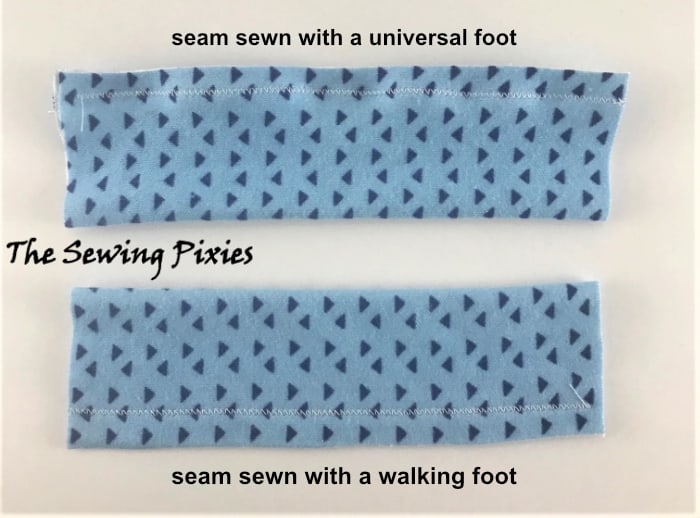
KNIT STITCHES. I mentioned earlier about using a straight stitch for sewing knit fabrics with Maxi-Lock Stretch Thread. If you are planning to use regular polyester thread, sewing knits with the straight stitch it’s not going to work. The minute you stretch your fabric those stitches will pop out.
Luckily, even the most basic sewing machines should have one or two settings for knits. Refer to your machine’s manual for specific settings when sewing with knits. I will show you knit stitch settings on my Janome DC 1050, to give you an idea of how you can use them.
#4 called “lightning bolt’ works on most knits. When using that stitch I set the width to 2.0 and the length 2.5.

#13 you can use for hamming, set the width to 5.0 and length 2.0
#14 stitch can do a job of two stitches, the straight stitch is seaming and the zigzag is overlocking. It would also work for hemming. I set the width to 5.0 and the length 2.5.
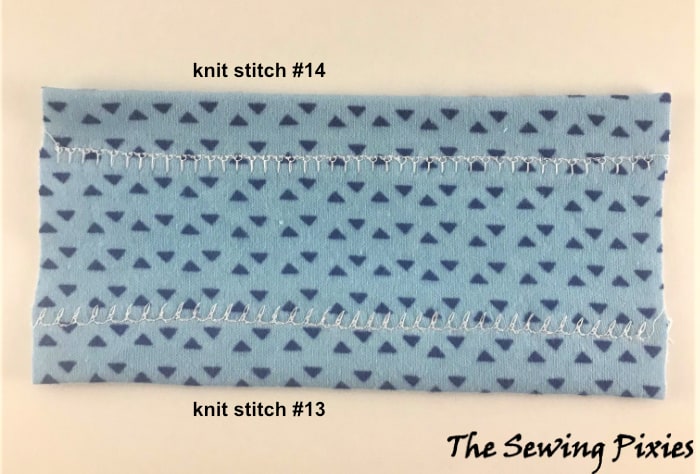
If you own a very old sewing machine you may not have any knit stitch option. In that case, a zigzag stitch is a great way to seam knit fabrics. Its structure allows for the fabric to stretch and move without fear of popping a seam.
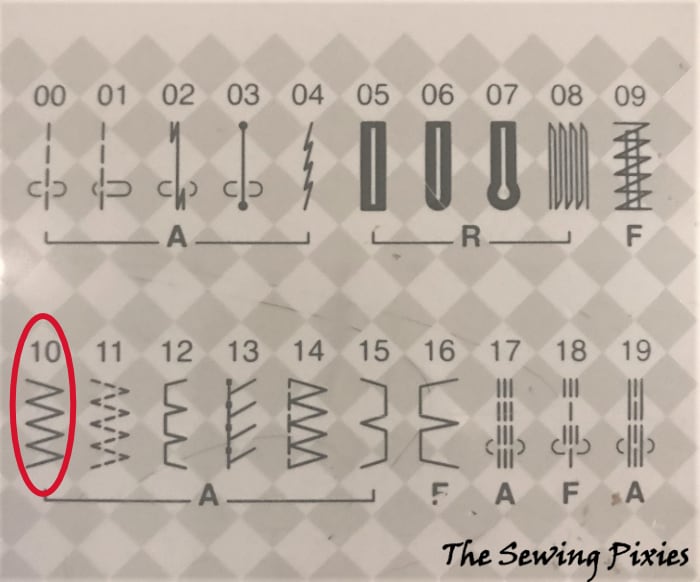
Setting a stitch width of 5.0 and length of 1.5 closely mimics the look and function of an overlock stitch allowing for maximum strength and stretch. This stitch is used for light to medium-weight knit fabrics.
Narrow zigzag can be used for seaming as well as for hamming on heavier knit fabrics that do not require a huge amount of stretch. This stitch looks like a straight stitch, but if you look closer you can see the small amount of width that gives the stitch just enough stretch. Set the zigzag width to very narrow of 0.5 and length a bit longer than normal to about 3.0.
NOTE: Stretchy fabrics should be finished with a single fold hem. Double fold hem can create unnecessary bulk and cause the hem to roll.
You may end up with some fabric stretches during sewing, and I have a simple solution how to get rid of these bulges. What you need to do is, hover your iron approximately 1” above the stretched seam and apply steam. The heat and moisture of the steam will help to shrink the seam back to its intended size and shape.
Learning and practicing with knit stitches to find the ones that work best with your machine and specific knit fabric is one of the keys to having your project be a success.
Knitwear is comfy, warm, cozy and we all love wearing knit garments. I am sure that with these easy-to-follow techniques and tips you will master and fall in love with sewing with knits.
Happy sewing!
Want To Remember This? Save The Tips On Sewing With Knits To Your Favorite Pinterest Board?


